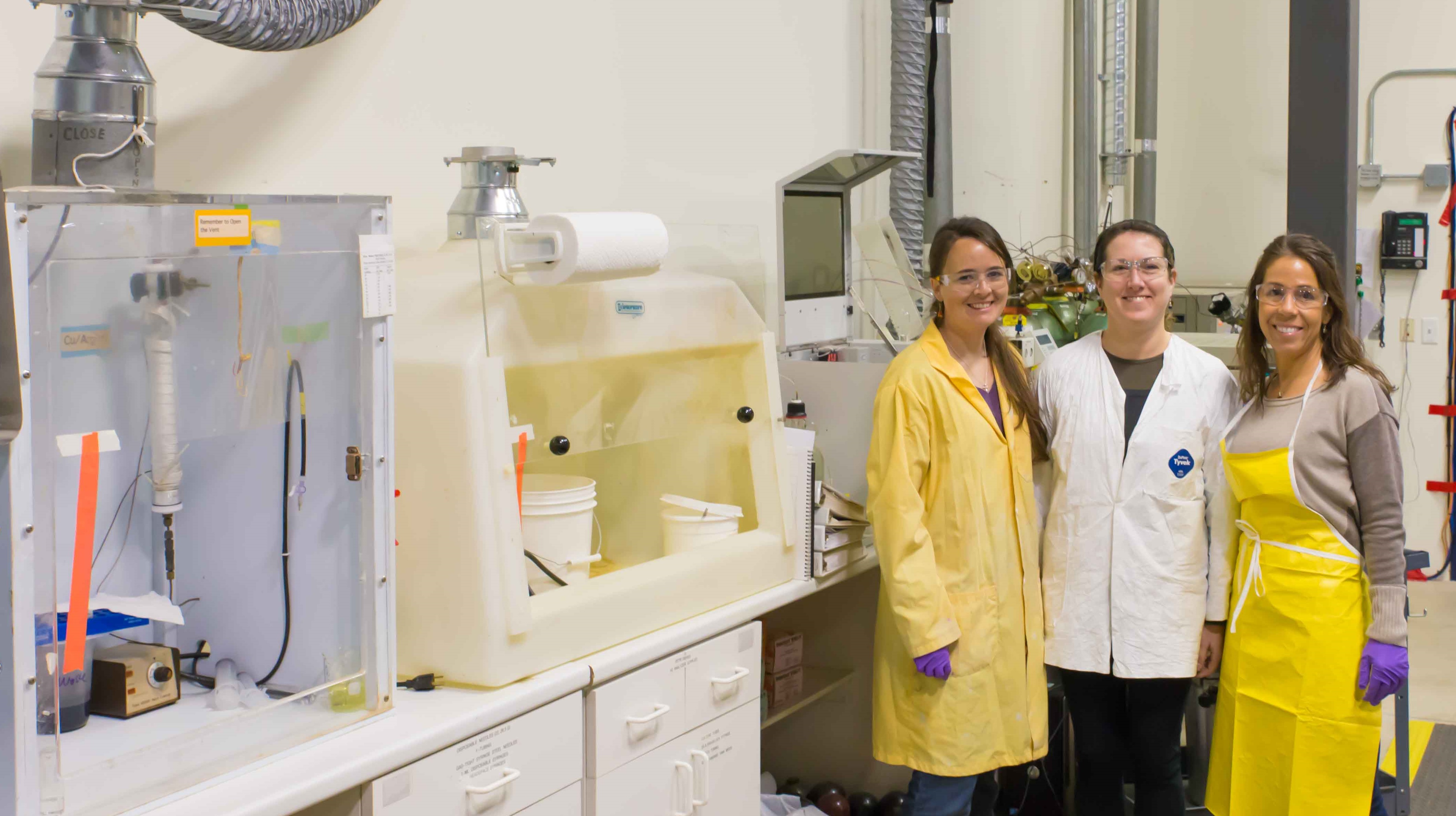 In instances where the treatment effectiveness cannot accurately be estimated in a batch test or when higher confidence levels are required, column testing may be necessary. Column testing provides insight into how flow rates and residence times may be impact the outcomes for permeable reactive barriers (PRBs), in situ chemical oxidation (ISCO), or soil vapor extraction (SVE). In the case of biological conditions, columns allow for a constant air/oxygen supply (or other gasses such as methane) to assess the effectiveness of biosparging at the site.
In instances where the treatment effectiveness cannot accurately be estimated in a batch test or when higher confidence levels are required, column testing may be necessary. Column testing provides insight into how flow rates and residence times may be impact the outcomes for permeable reactive barriers (PRBs), in situ chemical oxidation (ISCO), or soil vapor extraction (SVE). In the case of biological conditions, columns allow for a constant air/oxygen supply (or other gasses such as methane) to assess the effectiveness of biosparging at the site.
XDD has experience conducting column testing for:
- Soil vapor extraction (SVE)
- Thermal-enhanced SVE and biosparging
- In situ chemical oxidation (ISCO)
- Zero valent iron (ZVI)
- Stabilization/sorption
- Custom designed column studies
In-house readings allow for XDD to assess the progress of the column studies to optimize treatment parameters, maximizing the eventual full-scale application design . As always, XDD also brings their considerable experience associated with the design and application of remedial technologies when designing, conducting, and analyzing data from our treatability column studies.
Email XDD at lcrawford@xdd-llc.com with inquiries about our treatability testing services. Additionally, a selection of our case studies can be found here.
Treatability Studies
XDD performs treatability testing and microcosm studies to evaluate the site specific feasibility and to develop field-scale design parameters for all common in situ remediation technologies:
- In Situ Chemical Oxidation:
- Catalyzed Hydrogen Peroxide
- Activated Persulfate
- Permanganate
- In Situ Chemical Reduction:
- Zero Valent Iron (ZVI)
- Bi-Metallic Particles
- Metal Sulfides
- In Situ Bioremediation
- Aerobic
- Anaerobic
- Biostimulation
- Bioaugmentation
- In Situ Metals Stabilization
- pH adjustment
- metals sorption
- metals precipitation
- metals co-precipitation
Specialty Services
XDD Environmental will customize our treatability services to meet you site-specific needs. Our most recent approaches include:
-
-
- Thermal enhanced soil vapor extraction
- Thermally enhanced bioremediation
-
In-House Analytical Capabilities
- Natural attenuation parameters
- Dissolved gases such as methane, ethene, and ethane by gas chromatography (GC)
- Volatile chlorinated compounds by GC
- Alcohols, glycols, and water soluble ethers by GC
- Organic acids such as formate, lactate, and acetate by capillary ion electrophoresis and by ion chromatography
- Molecular hydrogen by reduction gas analysis
- Anions such as nitrate, nitrite, phosphate, chloride and sulfate

